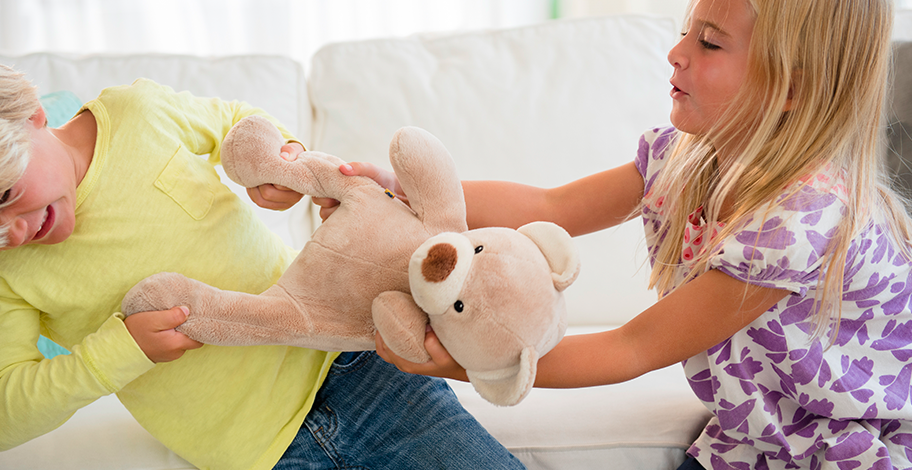Learn how to break the cycle of Sibling Hatred Syndrome and heal your family dynamics. Discover the causes, signs, and impact of sibling hatred, and explore practical strategies to build stronger sibling relationships. Find expert tips, real-life stories, and the long-term benefits of fostering love and support among siblings. Start healing today.
The sibling bond is often seen as an unbreakable force, an unyielding connection that lasts a lifetime. However, in some families, this bond may be marred by hate and resentment, leading to a condition known as Sibling Hatred Syndrome. In this article, we will delve into the depths of this syndrome, explore its causes and consequences, and provide valuable insights and strategies for healing and rebuilding the sibling relationship. So, if you’re ready to break the cycle of sibling hatred and foster a harmonious family environment, read on.
Understanding Sibling Hatred Syndrome
– Definition and symptoms
Sibling Hatred Syndrome is a complex emotional condition characterized by intense hate, resentment, and sibling rivalry. It is not merely a phase of childhood squabbles but a deep-rooted emotional discord that persists into adulthood. Symptoms of this syndrome may manifest in various ways, including constant arguments, physical altercations, verbal abuse, jealousy, and a general lack of empathy or support toward one another.
– Causes and contributing factors
The origins of Sibling Hatred Syndrome can be attributed to many factors. One significant contributor is parental favoritism, where parents unintentionally or intentionally show preferential treatment to one child over the others. This unequal distribution of love, attention, or resources can breed resentment and jealousy among siblings. Additionally, a lack of effective communication and conflict-resolution skills within the family can further exacerbate the development of sibling animosity.
Recognizing the Signs of Sibling Hatred Syndrome
Identifying the symptoms early on is crucial to address and heal Sibling Hatred Syndrome. By identifying these indicators, parents can initiate the healing process before the animosity escalates.
– Behavioral Indicators
The behavioral manifestations of Sibling Hatred Syndrome can vary widely. These may include constant bickering and verbal or physical aggression, persistent attempts to undermine or belittle each other’s achievements, refusal to engage in positive interactions or even deliberate exclusion from family activities. These hostile behaviors can create a toxic and emotionally charged atmosphere within the household.
– Emotional and Psychological Effects
Sibling Hatred Syndrome can take a toll on the emotional well-being of those involved. The feuding siblings may experience heightened stress, anxiety, and low self-esteem. Moreover, the negative emotions associated with this syndrome can hinder their overall development, impeding their ability to form healthy relationships and cope with conflicts in other areas of life.
The Impact of Sibling Hatred on Family Dynamics
The presence of Sibling Hatred Syndrome can cast a dark cloud over the entire family, creating a toxic and tense environment. Let’s explore the detrimental effects it can have on family dynamics.
– Communication breakdown
When sibling hatred prevails, healthy communication within the family becomes a rarity. The constant bickering and hostility make it challenging for family members to express their thoughts, feelings, and concerns openly. This communication breakdown affects the relationship between siblings and the entire family’s ability to function cohesively.
– Emotional consequences
Living in an environment marred by sibling hatred takes a toll on everyone involved. Feelings of anger, resentment, and sadness become pervasive, overshadowing any positive emotions. The emotional well-being of family members, including parents, may suffer greatly, leading to stress, anxiety, and even depression.
– Long-term effects
Sibling Hatred Syndrome can have long-lasting repercussions that extend far beyond childhood. As siblings grow into adulthood, unresolved animosity can strain their relationships, affecting future family gatherings, celebrations, and significant life events. Moreover, it may perpetuate a cycle of resentment and hate, leading to strained relationships among the next generation of siblings.

The Role of Parents in Healing Sibling Hatred Syndrome
As parents, you play a vital role in breaking the cycle of Sibling Hatred Syndrome and facilitating healing within your family. By implementing the following strategies, you can create a positive and supportive environment that fosters understanding, empathy, and reconciliation.
– Creating a Positive and Supportive Environment
Creating an atmosphere where love, respect, and compassion thrive is crucial. Encourage open communication, active listening, and the expression of emotions in a healthy manner. Foster a sense of belonging and security by promoting family values emphasizing kindness, forgiveness, and empathy.
– Encouraging Communication and Empathy
Help your children develop practical communication skills and empathy towards one another. Please encourage them to express their thoughts and feelings constructively, teaching them the importance of active listening and understanding each other’s perspectives. Promoting empathy can foster a greater sense of connection and mutual respect between siblings.
– Implementing Conflict Resolution Strategies
Conflict is an inevitable part of any relationship. Teach your children conflict resolution strategies that promote understanding and compromise. Please encourage them to identify the underlying issues, find common ground, and work towards mutually valuable solutions. By providing guidance and modeling healthy conflict resolution, you empower your children to navigate disagreements constructively.
Strategies for Healing Sibling Hatred Syndrome
While healing sibling hatred may seem daunting, it is not impossible. With dedication, empathy, and a willingness to change, families can break the cycle and forge more robust, healthier sibling bonds. Let’s explore some effective strategies for healing Sibling Hatred Syndrome.
– Foster open and honest communication
The foundation of any healthy relationship lies in open and honest communication. Encourage each family member to express their thoughts, feelings, and concerns without judgment. Establishing a safe space where siblings can communicate openly fosters understanding. It helps identify the underlying issues contributing to the hate.
– Encourage empathy and understanding
Developing empathy towards one another is crucial in healing sibling hatred. Encourage siblings to put themselves in each other’s shoes, striving to understand the emotions and experiences that shape their perspectives. By cultivating empathy, family members can better appreciate their siblings’ struggles and develop a more compassionate approach.
– Promote shared experiences and bonding
Creating opportunities for shared experiences and bonding can help rebuild the sibling relationship. Encourage siblings to participate in activities they enjoy, such as hobbies, sports, or family vacations. These shared experiences can foster a sense of camaraderie and allow for the cultivation of positive memories.
– Seek professional help if necessary
In some cases, healing sibling hatred may require the guidance and support of a professional therapist or counselor. Family therapy sessions can provide siblings with a safe and neutral environment to address their deep-seated issues, learn effective conflict resolution strategies, and work towards reconciliation. Feel free to seek professional help if the animosity persists or intensifies despite your efforts.
Overcoming Challenges in the Healing Process
While on the journey to healing sibling hatred, it is essential to acknowledge and address the challenges that may arise along the way.
– Managing conflicts and disagreements
Conflicts and fusses are inevitable in any relationship, and sibling bonds are no exception. When conflicts arise, encourage siblings to engage in constructive dialogue rather than resorting to hostility. Teach them effective conflict resolution techniques such as active listening, compromise, and finding common ground.
– Addressing deep-seated resentments
Sibling Hatred Syndrome often stems from deep-seated resentments that have accumulated over time. Encourage siblings to confront these resentments head-on, addressing past grievances and constructively expressing their feelings. Siblings can pave the way for healing and forgiveness by acknowledging and working through these issues.
– Building trust and forgiveness
Rebuilding trust is an essential component of healing sibling hatred. Siblings must be willing to forgive past transgressions and commit to rebuilding their bond. It is a gradual process that requires patience, understanding, and consistent effort from all parties involved.
Creating a Harmonious Sibling Relationship
Healing sibling hatred involves more than resolving conflicts; it requires building a harmonious and supportive sibling relationship. Here are some strategies to foster a healthy bond between siblings.
– Building individual connections
Encourage siblings to develop individual connections with each other. By spending one-on-one time together, they can deepen their understanding of one another, strengthen their connection, and create unique shared memories.
– Promoting mutual respect and support
Emphasize the importance of mutual respect and support within the sibling relationship. Encourage siblings to celebrate each other’s accomplishments and be a source of encouragement during challenging times. By fostering a supportive environment, siblings can develop a stronger bond built on trust and admiration.
– Celebrating differences and fostering cooperation
Every sibling is unique, with their own strengths, weaknesses, and interests. Encourage siblings to embrace and celebrate these differences. Acknowledging and respecting each other’s individuality can foster cooperation and collaboration rather than competition and resentment.
The Long-Term Benefits of Healing Sibling Hatred Syndrome
While healing sibling hatred requires time and effort, the long-term benefits are immeasurable. By breaking the cycle of hate and nurturing healthier sibling relationships, you pave the way for a harmonious family dynamic and lifelong bonds of love and support.
– Improved Family Dynamics and Harmony
Family dynamics improve significantly as siblings learn to communicate effectively, resolve conflicts, and support each other’s growth. The household becomes a sanctuary of love, understanding, and cooperation, fostering a positive and nurturing environment for all family members.
– Lifelong Bonds and Support
Healing sibling hatred sets the stage for lifelong bonds and lasting support. Siblings who have overcome their differences often develop deep connections built on shared experiences, empathy, and a genuine desire to see each other thrive. These bonds become pillars of strength during challenging times and a source of joy and companionship.
Conclusion
Sibling Hatred Syndrome can disrupt the harmony of a family and cause significant emotional distress for those involved. However, healing and transforming these relationships are possible with understanding, patience, and proactive efforts. By creating a positive environment, promoting communication and empathy, and seeking professional help, parents can break the cycle of sibling hatred and foster stronger sibling bonds. The long-term benefits of healing go beyond the immediate family, contributing to a more harmonious society where love and support thrive.
Frequently Asked Questions (FAQs)
1. Is sibling hatred common in families? Although not experienced by all families, sibling hatred is more common than one might think. It can manifest in various degrees of intensity and affect family dynamics significantly.
2. Can sibling hatred be outgrown with age? While some sibling animosity may diminish, deep-rooted sibling hatred often persists into adulthood. However, positive changes can be made with proactive efforts and a willingness to heal.
3. How long does it take to heal sibling hatred? The healing process varies from family to family, and no fixed timeline exists. It may take months or even years to rebuild trust and establish a healthier sibling relationship. Consistency and commitment are essential.
4. Can parents play a role in healing sibling hatred? Absolutely. Parents can play a vital role in healing by promoting open communication, encouraging empathy, and seeking professional help. Their support and guidance can make a significant difference.
5. Can sibling hatred affect other relationships within the family? Yes, sibling hatred can have a ripple effect on other relationships within the family. It can strain the parent-child relationship, create tension among extended family members, and impact the family dynamic.
